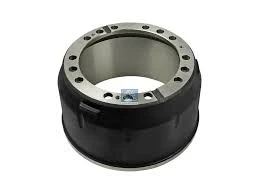
-
 Afrikaans
Afrikaans -
 Albanian
Albanian -
 Amharic
Amharic -
 Arabic
Arabic -
 Armenian
Armenian -
 Azerbaijani
Azerbaijani -
 Basque
Basque -
 Belarusian
Belarusian -
 Bengali
Bengali -
 Bosnian
Bosnian -
 Bulgarian
Bulgarian -
 Catalan
Catalan -
 Cebuano
Cebuano -
 Corsican
Corsican -
 Croatian
Croatian -
 Czech
Czech -
 Danish
Danish -
 Dutch
Dutch -
 English
English -
 Esperanto
Esperanto -
 Estonian
Estonian -
 Finnish
Finnish -
 French
French -
 Frisian
Frisian -
 Galician
Galician -
 Georgian
Georgian -
 German
German -
 Greek
Greek -
 Gujarati
Gujarati -
 Haitian Creole
Haitian Creole -
 hausa
hausa -
 hawaiian
hawaiian -
 Hebrew
Hebrew -
 Hindi
Hindi -
 Miao
Miao -
 Hungarian
Hungarian -
 Icelandic
Icelandic -
 igbo
igbo -
 Indonesian
Indonesian -
 irish
irish -
 Italian
Italian -
 Japanese
Japanese -
 Javanese
Javanese -
 Kannada
Kannada -
 kazakh
kazakh -
 Khmer
Khmer -
 Rwandese
Rwandese -
 Korean
Korean -
 Kurdish
Kurdish -
 Kyrgyz
Kyrgyz -
 Lao
Lao -
 Latin
Latin -
 Latvian
Latvian -
 Lithuanian
Lithuanian -
 Luxembourgish
Luxembourgish -
 Macedonian
Macedonian -
 Malgashi
Malgashi -
 Malay
Malay -
 Malayalam
Malayalam -
 Maltese
Maltese -
 Maori
Maori -
 Marathi
Marathi -
 Mongolian
Mongolian -
 Myanmar
Myanmar -
 Nepali
Nepali -
 Norwegian
Norwegian -
 Norwegian
Norwegian -
 Occitan
Occitan -
 Pashto
Pashto -
 Persian
Persian -
 Polish
Polish -
 Portuguese
Portuguese -
 Punjabi
Punjabi -
 Romanian
Romanian -
 Russian
Russian -
 Samoan
Samoan -
 Scottish Gaelic
Scottish Gaelic -
 Serbian
Serbian -
 Sesotho
Sesotho -
 Shona
Shona -
 Sindhi
Sindhi -
 Sinhala
Sinhala -
 Slovak
Slovak -
 Slovenian
Slovenian -
 Somali
Somali -
 Spanish
Spanish -
 Sundanese
Sundanese -
 Swahili
Swahili -
 Swedish
Swedish -
 Tagalog
Tagalog -
 Tajik
Tajik -
 Tamil
Tamil -
 Tatar
Tatar -
 Telugu
Telugu -
 Thai
Thai -
 Turkish
Turkish -
 Turkmen
Turkmen -
 Ukrainian
Ukrainian -
 Urdu
Urdu -
 Uighur
Uighur -
 Uzbek
Uzbek -
 Vietnamese
Vietnamese -
 Welsh
Welsh -
 Bantu
Bantu -
 Yiddish
Yiddish -
 Yoruba
Yoruba -
 Zulu
Zulu
signs of bad drum brakes
Signs of Bad Drum Brakes What You Need to Know
Drum brakes are a common component of many vehicles, especially older models and certain compact cars. They are designed to slow down or stop the vehicle safely and efficiently. However, just like any other component of your vehicle, they can wear out over time, leading to potential safety hazards. It's crucial for drivers to recognize the signs of bad drum brakes to ensure their safety and maintain their vehicle's performance. Here are some key indicators that your drum brakes might need attention.
1. Squealing or Grinding Noise
One of the most noticeable signs of bad drum brakes is the sound they make when applying the brakes. If you hear a high-pitched squealing noise, it could indicate that the brake shoes are worn down and need replacement. On the other hand, a grinding sound when you press the brake pedal can signal that the brake shoes have worn through completely, and the metal components of the brake are making contact with the drum. This not only signifies that replacements are necessary but also indicates possible damage to the drum itself.
If you feel a vibration or pulsation when pressing the brake pedal, it may be due to warped brake drums. This warping can occur due to excessive heat from prolonged braking or from regular wear and tear. When the brake drums are not perfectly smooth, they cause the brake shoes to make inconsistent contact, leading to a pulsating sensation. This condition can affect braking efficiency, making it imperative to have your brakes inspected promptly.
3. Poor Braking Performance
One of the most obvious signs that your drum brakes are failing is a noticeable decrease in braking performance. If you find that your vehicle requires more distance to stop, or if the brake pedal feels spongy or soft when you press it, it's time to have your braking system checked. Compromised drum brakes can increase stopping distances and create a dangerous driving situation.
signs of bad drum brakes

4. Warning Light
Many modern vehicles come equipped with a dashboard warning light that indicates issues with the braking system. If this light illuminates, it is essential to address it promptly. The alert could be triggered by various issues, including worn brake pads or shoes, low brake fluid, or problems with the braking system itself. Ignoring this warning can lead to more severe issues and costly repairs.
5. Brake Fluid Leaks
Fluid leaks around the wheels or under the vehicle can indicate that your drum brake system is malfunctioning. Brake fluid is crucial for the proper functioning of the brakes, and any leaks can lead to a loss of hydraulic pressure, resulting in poor braking performance. If you notice any fluid under your vehicle, it’s wise to have it checked by a professional as soon as possible.
6. Pulling to One Side
If your vehicle tends to pull to one side when you apply the brakes, it may indicate uneven wear on the brake shoes or an issue with the brake drum itself. This can create instability while driving and can significantly increase the risk of an accident.
In conclusion, being aware of the signs of bad drum brakes can help you maintain the integrity of your vehicle and ensure your safety on the road. Regular maintenance and inspections are vital in preventing more significant issues down the line. If you experience any of the signs mentioned above, don't hesitate to seek professional help. Keeping your braking system in good condition is essential for a safe driving experience.
-
Rear Drum Brakes Maintenance TipsNewsAug.04,2025
-
Key Components Affecting Brake Drum FunctionNewsAug.04,2025
-
Important Inspection for Truck Drum BrakeNewsAug.04,2025
-
How to Prepare for Changing Rear Drum BrakesNewsAug.04,2025
-
Essential Tools for Cleaning Drum Brakes ProperlyNewsAug.04,2025
-
Brake Drum Function GuideNewsAug.04,2025
-
Safety Features of Red Brake DrumsNewsAug.01,2025
